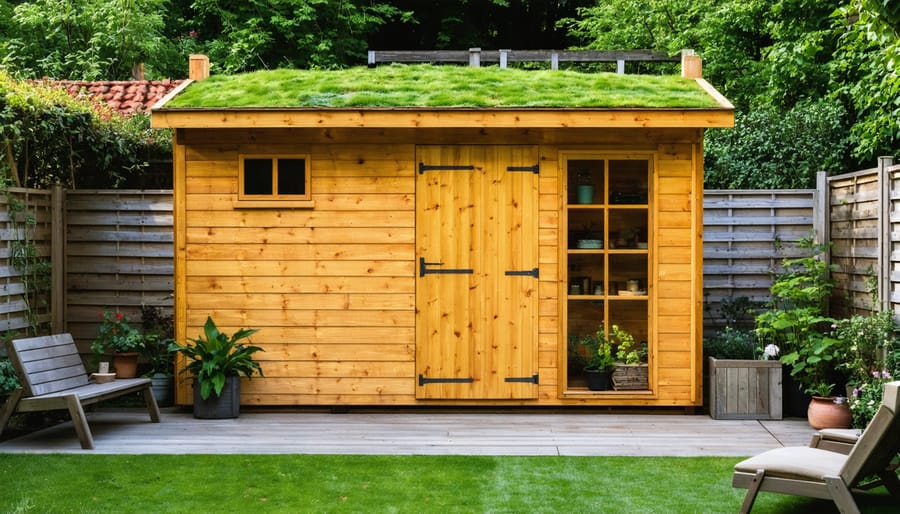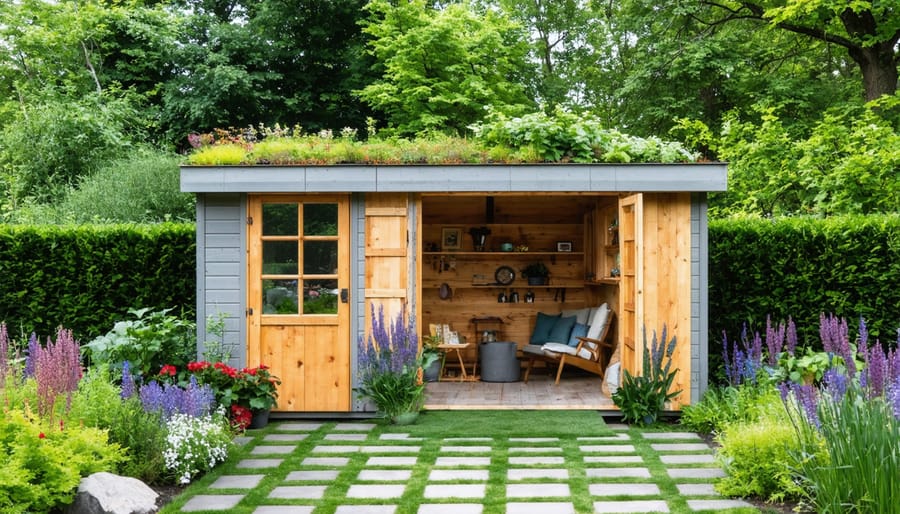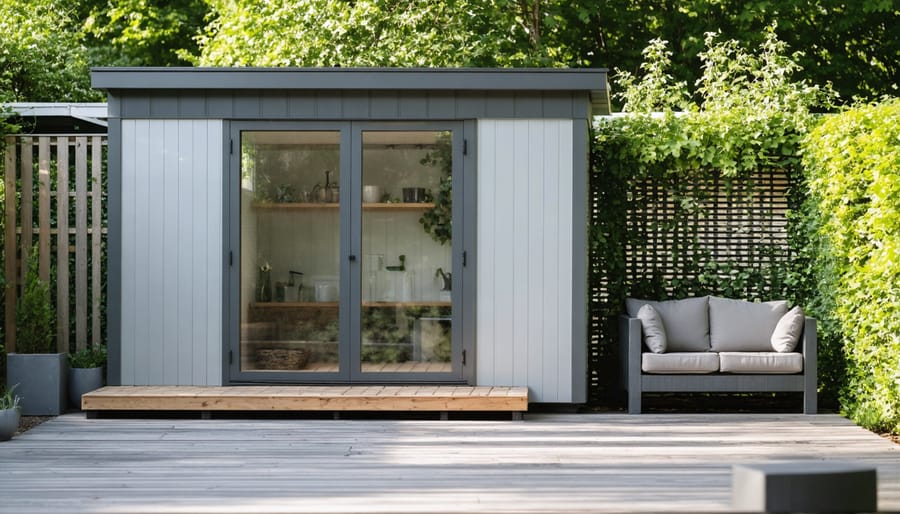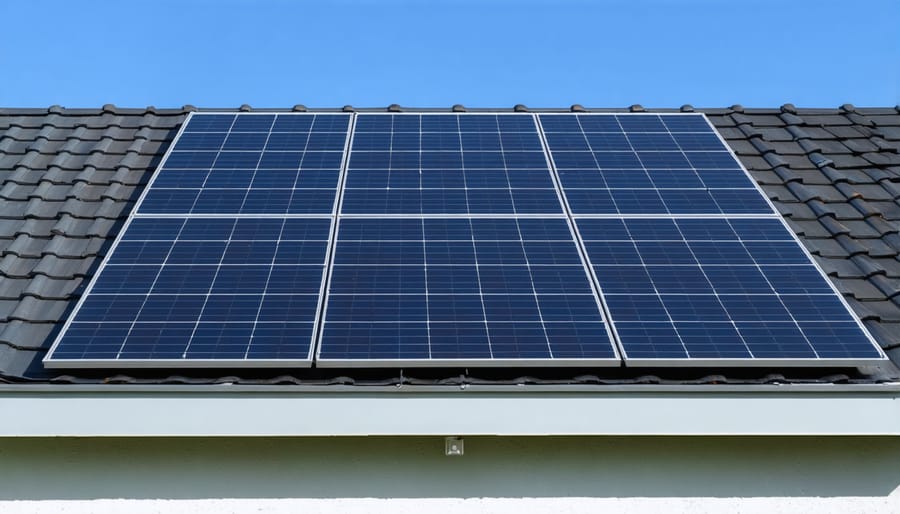Build Your Eco-Friendly Shed: Smart Ways to Slash Carbon Emissions

The climate crisis demands immediate action, and our individual choices matter more than ever. Every day, millions of tons of carbon dioxide pour into our atmosphere, but the power to make a difference lies in our hands. By making smart, sustainable choices in our daily lives, we can significantly reduce our carbon footprint and contribute to a healthier planet. While global climate action requires systemic change, personal responsibility plays a crucial role in driving that transformation. The following five practical strategies not only help combat climate change but also often lead to cost savings and a more mindful lifestyle. Whether you’re just starting your sustainability journey or looking to enhance your existing eco-friendly practices, these proven methods will help you make a meaningful impact on reducing your carbon emissions while inspiring others to follow suit.

Choose Sustainable Building Materials
Reclaimed Wood and Recycled Materials
One of the most effective ways to reduce your carbon footprint is by incorporating eco-friendly building materials like reclaimed wood and recycled materials into your shed construction. Salvaged lumber from old barns, demolished buildings, or shipping pallets not only adds character to your structure but also prevents these materials from ending up in landfills. Local salvage yards and architectural salvage stores are excellent sources for these materials.
Consider using recycled metal roofing, which often comes from industrial buildings or old agricultural structures. These materials are typically just as durable as new ones and come with the added benefit of reducing manufacturing demands. Recycled plastic lumber, made from post-consumer waste, offers another sustainable alternative for trim work and non-structural components.
When sourcing materials, look for suppliers who specialize in reclaimed building supplies. Many offer cleaned and processed materials ready for immediate use. Remember to inspect each piece carefully for structural integrity and treat any reclaimed wood for insects before use. This approach not only helps the environment but often results in unique, characterful structures that tell a story through their materials.
Local Material Sourcing
When it comes to reducing your carbon footprint, choosing locally sourced materials makes a significant impact. By selecting materials from suppliers within your region, you dramatically cut down on transportation emissions – those greenhouse gases produced when materials are shipped across countries or continents. Many homeowners are surprised to learn that the transportation of building materials can account for up to 10% of their project’s total carbon footprint.
Look for lumber yards, stone quarries, and hardware stores within a 100-mile radius of your location. These local suppliers often offer materials that are not only environmentally friendly but also better suited to your climate. For example, locally harvested wood is typically better adapted to your area’s weather conditions, potentially lasting longer and requiring less maintenance.
Working with local suppliers also supports your community’s economy and often results in better service. You can inspect materials in person, get personalized advice, and even arrange more flexible delivery schedules. Plus, if you need additional materials later, you won’t have to wait for long-distance shipping, further reducing your project’s carbon impact.
Implement Energy-Efficient Design
Natural Lighting Solutions
Maximizing natural light in your space isn’t just about creating a bright, welcoming environment – it’s a powerful way to reduce your energy consumption and carbon footprint. Start by strategically placing windows to capture optimal sunlight throughout the day. South-facing windows are particularly effective in northern hemispheres, providing consistent natural light year-round.
Consider installing skylights or solar tubes, which can flood interior spaces with natural light even on cloudy days. Light-colored interior walls and reflective surfaces can help bounce daylight deeper into your space, reducing the need for artificial lighting. Strategic placement of mirrors opposite windows can effectively double the amount of natural light entering a room.
Keep windows clean and unobstructed, and trim any outdoor vegetation that might block sunlight. For spaces where privacy is a concern, consider using translucent window films or frosted glass that allow light through while maintaining privacy. During summer months, use light-colored, adjustable blinds to control heat gain while still benefiting from natural light.
Remember, every hour you rely on natural light instead of artificial lighting reduces your energy consumption and helps shrink your carbon footprint.

Proper Insulation Techniques
Proper insulation is a key factor in reducing your carbon footprint, and choosing the right materials makes all the difference. Today’s sustainable insulation options include recycled denim, sheep’s wool, and cellulose, which offer excellent thermal performance while being environmentally responsible.
Start by identifying air leaks around windows, doors, and other openings. Apply weatherstripping and caulk to seal these gaps before installing insulation. When installing, ensure complete coverage without compression, as compressed insulation loses effectiveness. Pay special attention to attic spaces and walls, where most heat loss occurs.
Layer your insulation properly, starting with a vapor barrier when necessary, followed by your chosen eco-friendly material. Don’t forget about pipes and ductwork – insulating these can further reduce energy waste. For best results, consider combining different types of insulation for various areas of your home, such as rigid foam boards for basement walls and blown-in cellulose for attics.
Remember to wear appropriate safety gear and ensure proper ventilation during installation. Regular maintenance checks help maintain insulation effectiveness and prevent energy waste over time.
Minimize Construction Waste
Reducing construction waste isn’t just good for the environment – it’s also friendly to your wallet. Start by carefully measuring and planning your materials list to avoid over-purchasing. A detailed cut list helps maximize the use of lumber and sheets, turning what might be scrap into useful pieces for smaller components like shelf supports or trim work.
Consider ordering pre-cut materials when possible, as this often results in less waste than on-site cutting. When you do need to cut materials, organize your cuts efficiently – start with larger pieces and work your way down to smaller ones, using offcuts creatively for other parts of the project.
Set up a dedicated recycling station at your construction site with separate bins for wood, metal, and recyclable packaging materials. Many building suppliers now offer take-back programs for unused materials and packaging, so check with your local retailer about these options.
Choose materials with minimal packaging, and opt for suppliers who use recyclable or biodegradable packaging when possible. For insulation and weatherproofing, select materials that come in appropriate sizes for your project to minimize excess.
Don’t overlook the value of salvaged materials – items like doors, windows, and hardware can often be sourced from local rebuilding centers. This not only reduces waste but also adds character to your shed while saving money.
Store materials properly to prevent damage from weather or mishandling. Keep lumber elevated and covered, protect sheets from moisture, and handle materials carefully to avoid unnecessary waste due to damage.
Finally, consider donating usable excess materials to local building material reuse centers or community projects, ensuring that even your leftover materials find a purpose rather than ending up in a landfill.
Install Green Energy Features
Transforming your shed into an eco-friendly space starts with implementing smart solar power solutions and other green energy features. Start by installing solar panels on your shed’s roof, where they’ll capture maximum sunlight throughout the day. Even a small 100-watt panel can power basic lighting and small tools, making your shed self-sufficient and reducing your reliance on grid electricity.
Consider adding a solar-powered ventilation fan to maintain proper airflow and temperature control. These units are particularly effective in keeping your stored items protected from moisture and heat damage while using zero grid energy. For nighttime illumination, LED motion sensor lights powered by small solar collectors provide security and convenience without increasing your carbon footprint.
Battery storage systems have become more affordable and efficient, making them an excellent addition to your shed’s green energy setup. A basic lithium battery bank can store excess solar energy for use during cloudy days or evenings, ensuring continuous power availability.
Don’t overlook simple passive solar design elements. Installing a skylight or solar tube can provide natural daytime lighting, while proper insulation and reflective roof coating help maintain comfortable temperatures year-round. For those in windy areas, a small wind turbine can complement your solar setup, creating a hybrid renewable energy system.
Remember to choose energy-efficient tools and equipment for your shed. Opt for battery-powered tools that can be charged using your solar system, and install smart power strips to prevent phantom energy loss when tools aren’t in use.

Incorporate Sustainable Landscaping
Transform your shed’s surroundings into an eco-friendly oasis by incorporating sustainable landscaping practices. Start by planting native species around your shed, as they require less water and maintenance while supporting local wildlife. Consider creating a rain garden near your shed’s downspouts to manage water runoff naturally and prevent soil erosion.
Install a rain barrel to collect rainwater from your shed’s roof, which you can use for watering plants during dry spells. Create shade by strategically planting deciduous trees on the south and west sides of your shed – they’ll provide cooling shade in summer while allowing warming sunlight in winter.
Replace traditional lawns around your shed with low-maintenance groundcover or xeriscaping options that don’t require frequent mowing or watering. Consider adding a green roof to your shed using drought-resistant succulents, which not only reduces carbon emissions but also provides excellent insulation.
Add composting bins near your shed to create nutrient-rich soil for your garden while reducing waste. Finally, use permeable materials for pathways leading to your shed, allowing rainwater to naturally seep into the ground rather than creating runoff.
By implementing these eco-friendly strategies in your shed construction, you’re not just creating a storage space – you’re making a positive impact on the environment. From choosing sustainable materials to implementing proper insulation and renewable energy sources, each step contributes to reducing your carbon footprint. These environmentally conscious choices often lead to long-term cost savings while creating a durable, efficient structure that you can be proud of. Remember, every sustainable decision matters, no matter how small. By building green today, you’re investing in a cleaner, healthier tomorrow for future generations. Start your eco-friendly shed project now and join the growing community of environmentally responsible homeowners making a difference, one building at a time.

